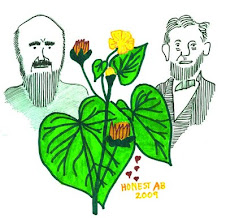It is easy, now that I live in France, to feel proud that I am part of a society that has less of a destructive impact on the Earth than I did when I lived in America. For example, in America, by my actual count in Oklahoma, about one-third of the vehicles on the road were pickup trucks, most of them with empty truck beds and not used for work. In contrast, in France, almost nobody drives big pickup trucks around. Instead, they drive small cars. Pickup trucks could simply not fit on most of the roads in cities, though trucks still transport merchandise on highways between cities. In addition, the French have a lot fewer cars. The country that leads the world in car ownership per capita is San Marino, with 1,606 vehicles per 1,000 population. In France, there are only 671 cars per 1,000 people, compared to America’s average of 850.
France has recently moved away from fossil fuels, especially since Russia’s invasion of the Ukraine (which exports much fossil fuel to Europe), but not very far.
In France, fracking for natural gas is illegal. In America, in contrast, fracking is celebrated even by environmental organizations because natural gas is less carbon-intense than coal or oil. But fracking unintentionally (one could say uncontrollably) produces gas leaks, and methane is an even more powerful greenhouse gas than carbon dioxide. At least as important a reason is that fracking can destabilize dormant faults and produce earthquakes. For a while around 2013, Oklahoma was the most earthquake-prone part of the United States, surpassing even California, a fact noted by numerous scientific articles. When I was growing up in Cushing, Oklahoma, we worried about earthquakes in California, to which we were moving, not imagining that Cushing would be an earthquake epicenter a half century later. By the time I left Oklahoma, when I drove between Durant and Tulsa on rural highways, I saw dozens of new fracking facilities.
But France is not as good as it looks, though much greener than America. And although in France there are more small cars (and fuel-efficient work vans) and fewer trucks than in America, a lot of these small cars smell strongly of fumes.
France gets 64.8 percent of its power from nuclear energy, and is building new nuclear plants. France leads the world in the percentage of nuclear power. The principal reason for this is energy security. France considered decommissioning many of its nuclear plants, but when Russia invaded Ukraine, threatening fossil fuel supplies, France decided to keep its nuclear plants open. It uses more nuclear energy per capita than America (18.6 percent). In this way also, France does not appear to be as green as one might think. France gets more of its energy from hydropower (10.4 percent) than America (5.5 percent), but not a lot. In America, though not as much as in China, much of the hydropower comes from big dam projects. In France, a lot of the electricity comes from small-scale projects, such as the Fessenheim facility on the Rhine River, which has not require the construction of a huge dam or expensive maintenance. I have even seen tiny micro-power stations along creeks in the Vosges Mountains of Alsace in France, from which just a single cable conveyed electricity.
Is France doing enough to be environmentally responsible? Is it a light-green society, as Michael Bess referred to it in his 2003 book? But that’s better than being, like America and China, superstars of environmental degradation. When I go walking in France, I can breathe a little easier than I could in America, knowing that I am in a society that is preparing seriously, if imperfectly, for a future of environmental constraints.
